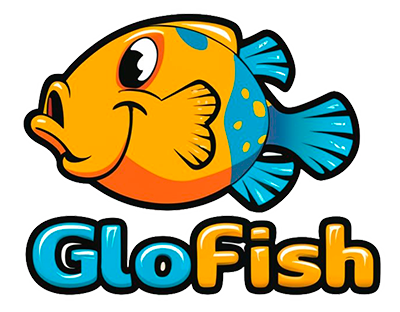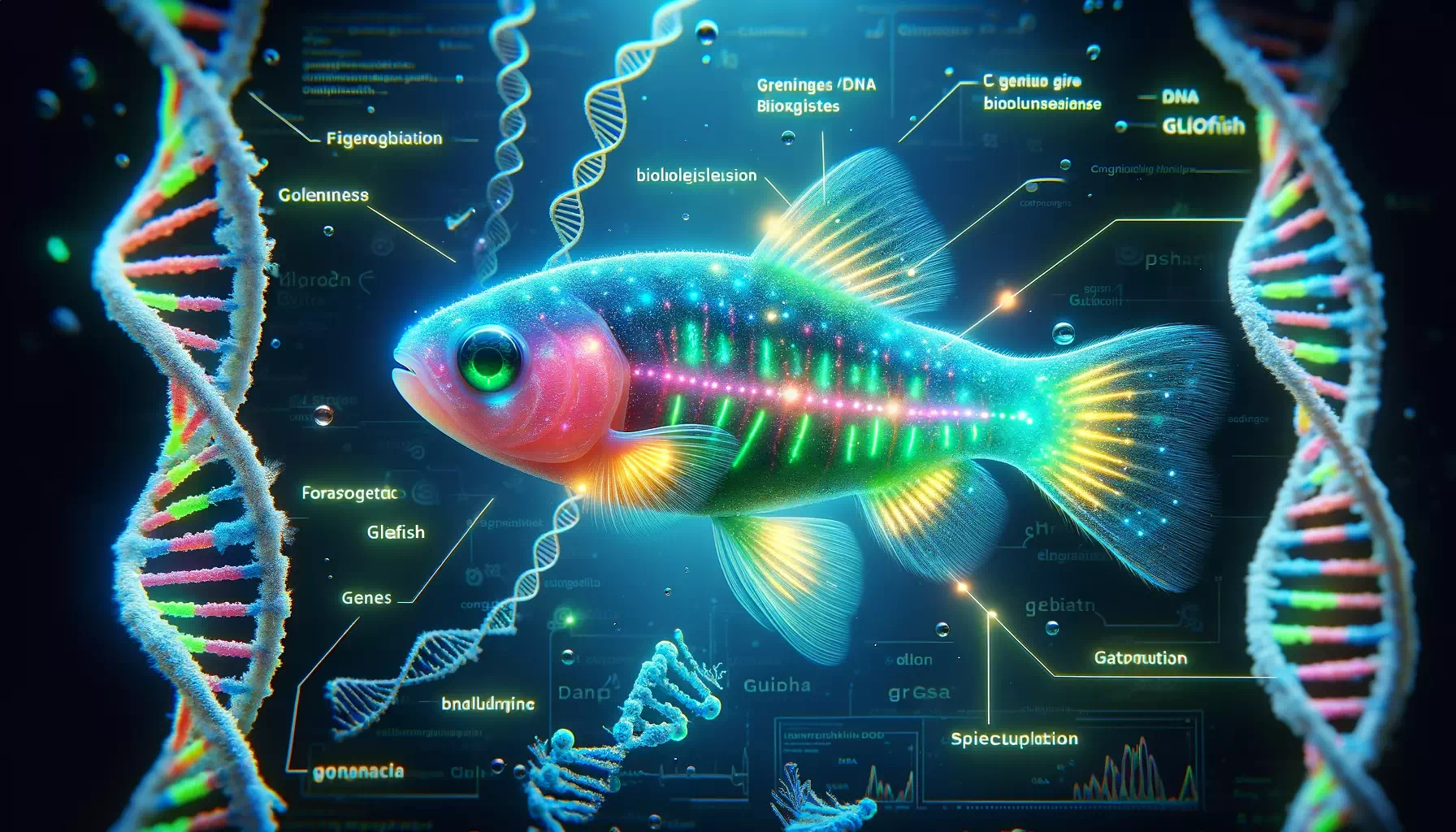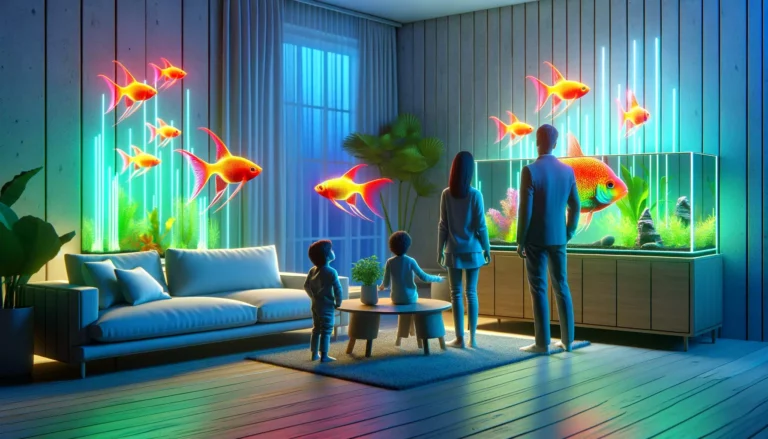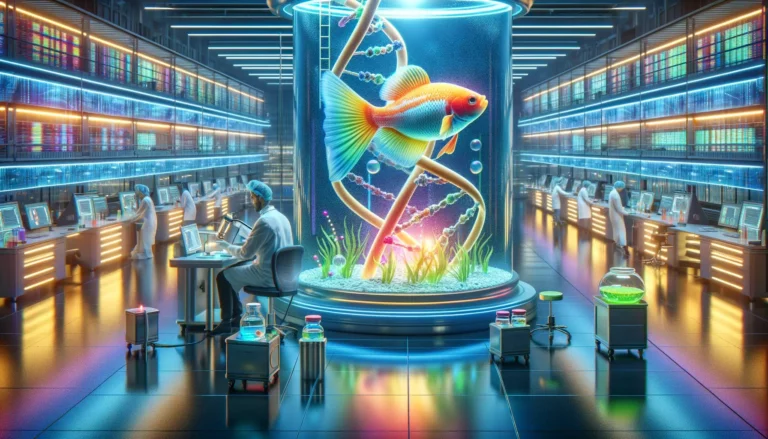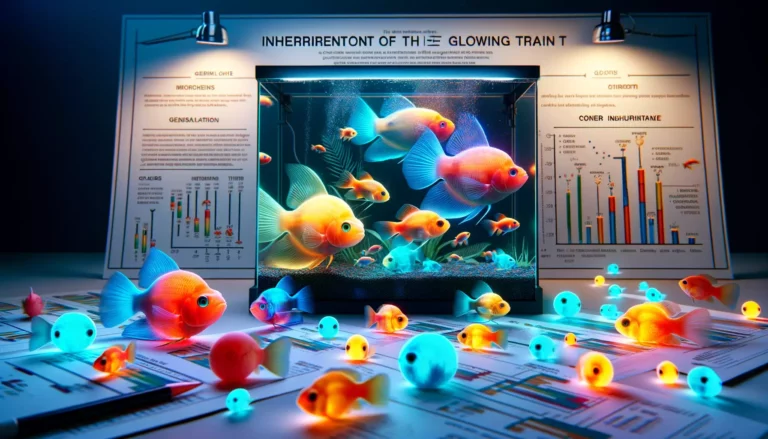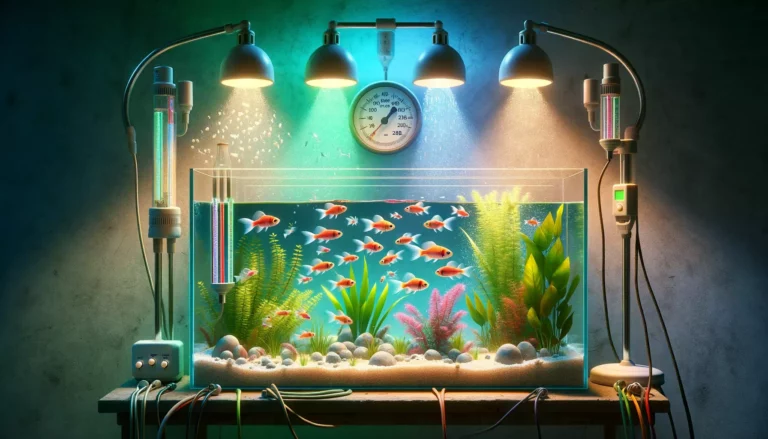Accessibility of GloFish to Aquarium Enthusiasts
GloFish, a fascinating addition to the aquarium world, began as a scientific endeavor. In the late 1990s, scientists at the National University of Singapore aimed to create fish that could detect environmental pollution. By inserting a fluorescent gene from jellyfish into zebrafish embryos, they made the first GloFish. These fish glowed under ultraviolet light, intended as a signal for water toxins.
The idea of using GloFish for environmental monitoring was innovative. However, their appeal quickly extended beyond research. In 2003, a Texas-based company, Yorktown Technologies, acquired the rights to market GloFish. They introduced these colorful fish to the aquarium trade. The fluorescent zebrafish, initially a tool for environmental research, became the first genetically modified animal sold as a pet.
GloFish’s journey from a lab to home aquariums marks a significant event in biotechnology. Initially, their availability was limited due to ethical and regulatory concerns. Over time, these concerns eased, allowing GloFish to be sold in various colors. They became popular for their unique appearance and ease of care. This transition from a scientific tool to a popular pet highlights the impact of genetic engineering on everyday life.
Genetic Modification and Genes in GloFish

GloFish are not just ordinary fish with an unusual appearance; they are a product of genetic modification. Scientists create GloFish by inserting a gene that produces fluorescent proteins. These genes come from marine organisms like jellyfish and sea anemones. The process involves transferring the fluorescent gene into the fish embryos, which then integrate it into their genome.
The resulting fish display bright, neon colors under specific light conditions. For example, the gene from the jellyfish Aequorea victoria gives a green fluorescent color. The sea anemone Entacmaea quadricolor provides a gene for a red hue. These modifications do not affect the fish’s lifespan or health. GloFish are similar to their non-modified counterparts in behavior and care needs.
It’s important to note that GloFish pass these genes to their offspring. However, breeding GloFish is subject to legal restrictions in many areas. The creation of GloFish showcases how genetic engineering can alter an organism’s traits. It also raises questions about the ethics and future of such modifications. Despite these concerns, GloFish have gained popularity due to their vibrant colors and the novelty they bring to aquariums.
Ethical Considerations and Controversies in GloFish Sales
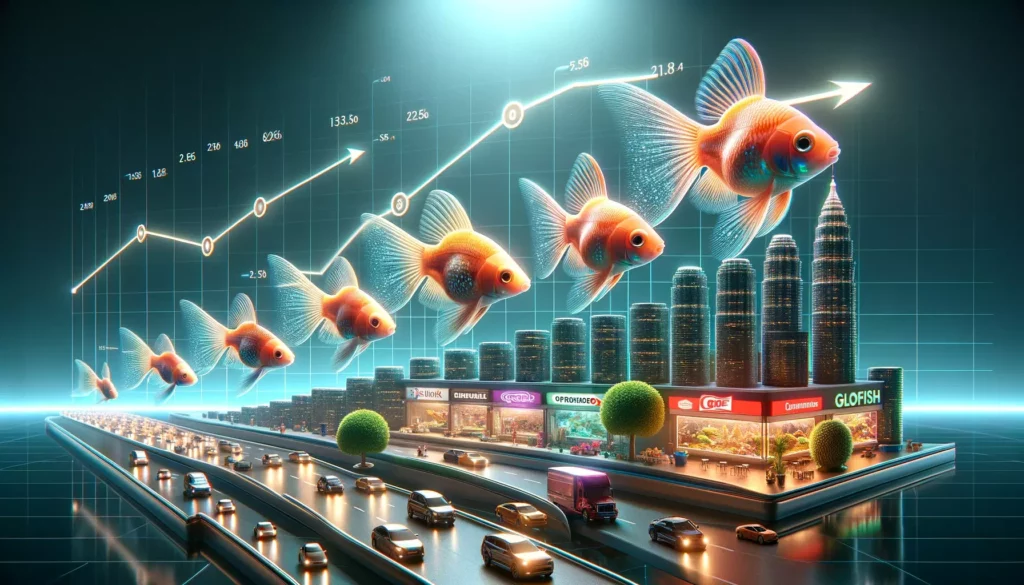
The sale of GloFish has sparked various ethical debates. One central concern is the impact of genetic modification on the fish themselves. Critics argue that altering the genetic makeup for aesthetic purposes might affect the well-being of the fish. There are worries about potential long-term health effects that might not be fully understood yet. The ethical debate centers on whether it’s right to modify animals purely for human enjoyment.
Another point of contention is the potential environmental impact. If GloFish were to escape into the wild, they could interbreed with native species. This might lead to ecological imbalances. While GloFish are sterile in some jurisdictions to prevent this, the risk remains a concern.
Moreover, GloFish challenge traditional notions of pet ownership and animal welfare. They raise questions about the boundaries of genetic engineering. The bright, unnatural colors of GloFish are a constant reminder of human intervention. This leads to discussions about the limits of human influence on nature. The GloFish debate reflects broader concerns about biotechnology’s role in society.
Regulations and Laws for GloFish Sales Internationally
Regulations for GloFish sales vary widely internationally. In the United States, the FDA decided not to regulate GloFish as they are not intended for food use. However, certain states, like California, initially banned their sale. These decisions reflect differing views on genetic modification and its implications.
| Location | Regulatory Status | Key Points |
|---|---|---|
| United States | Not regulated by FDA for food use | Some states (e.g., California) initially banned sales. Reflects differing views on genetic modification. |
| European Union | Considered GMOs, subject to strict regulations | Laws aim to protect native species and ecosystems from potential GMO risks. More restricted sales compared to the U.S. |
| Other Countries | Inconsistent regulations or none specific to GloFish | Sold under the same regulations as other aquarium fish. |
| Global Perspective | Demonstrates the complexity of biotechnology governance | Emphasizes the need for balanced policies considering ethics, environmental safety, and public interest. |
In the European Union, GloFish are generally considered GMOs (Genetically Modified Organisms). As such, they are subject to stringent regulations. These laws aim to protect native species and ecosystems from potential GMO risks. The sale of GloFish in the EU is more restricted compared to the U.S.
In other parts of the world, regulations can be inconsistent. Some countries have no specific laws regarding GloFish. In these places, they are sold under the same regulations as other aquarium fish.
The diverse regulatory landscape for GloFish sales demonstrates the complexity of governing biotechnology. It underscores the need for balanced policies. These policies must consider ethical concerns, environmental safety, and public interest. The regulation of GloFish is a small part of a larger conversation about biotech advancements.
Care Requirements: GloFish vs. Non-Modified Fish
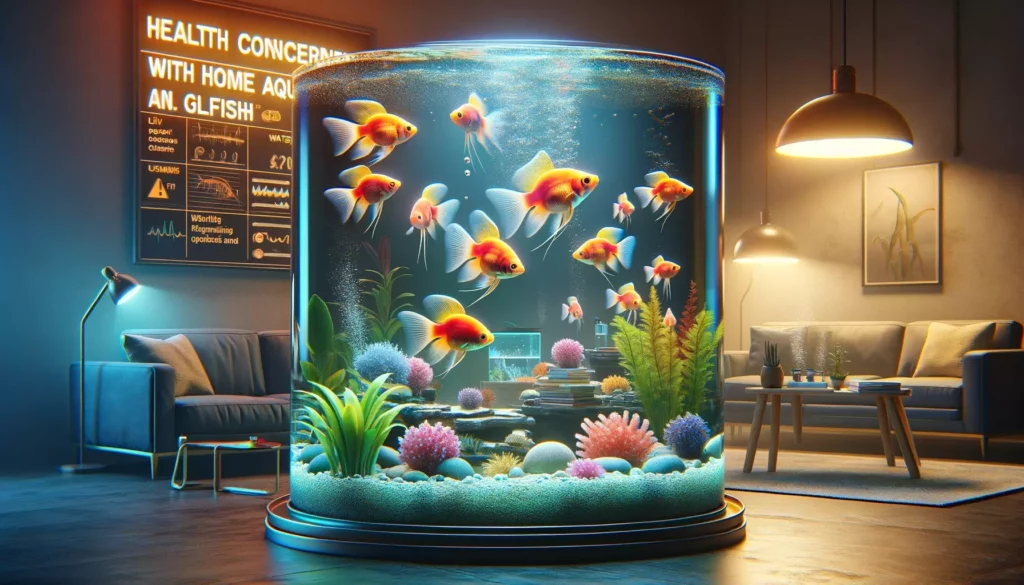
Caring for GloFish is similar to caring for their non-modified counterparts. GloFish, genetically modified versions of species like zebrafish, tetras, and barbs, require standard aquarium care. This includes maintaining clean water, proper filtration, and appropriate feeding. GloFish do not require special care beyond what their non-modified relatives need.
The main difference lies in lighting. To fully appreciate GloFish’s vibrant colors, specific lighting that enhances their fluorescence is recommended. However, this lighting is not essential for their health. It’s more about aesthetics for the aquarium viewer.
Like all aquarium fish, GloFish thrive in a stable environment. This means regular monitoring of water temperature, pH levels, and ammonia levels. Overfeeding should be avoided to maintain water quality. These care aspects are standard across both GloFish and non-modified fish.
Environmental and Ecosystem Impact of GloFish
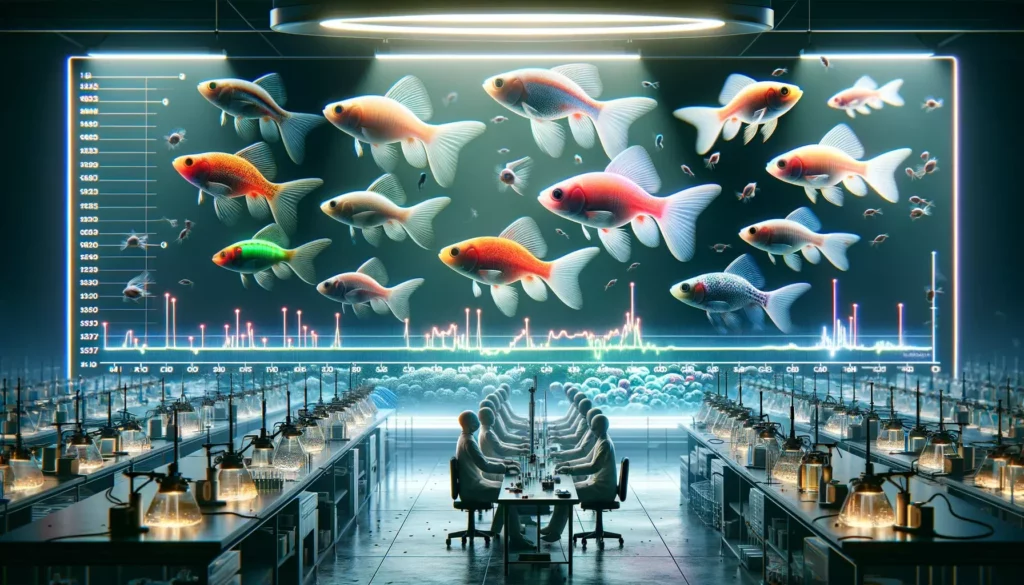
The environmental and ecosystem impact of GloFish is a subject of discussion. A primary concern is the potential impact if GloFish were released into the wild. There are worries that they might compete with native species for resources or introduce new diseases. However, studies suggest that GloFish, especially in colder climates, are unlikely to survive in the wild. This reduces the risk of them establishing populations and affecting native ecosystems.
In response to these concerns, some GloFish species are engineered to be sterile. This prevents them from breeding if they escape into natural water bodies. Additionally, in many areas, regulations discourage or outright prohibit releasing GloFish into the wild.
Despite these measures, the possibility of unintended ecological consequences remains a topic of debate. It underscores the importance of responsible pet ownership and adherence to local wildlife regulations. While GloFish are deemed safe for home aquariums, their potential environmental impact is a crucial consideration in their regulation and sale.
Market Evolution of GloFish Since Introduction
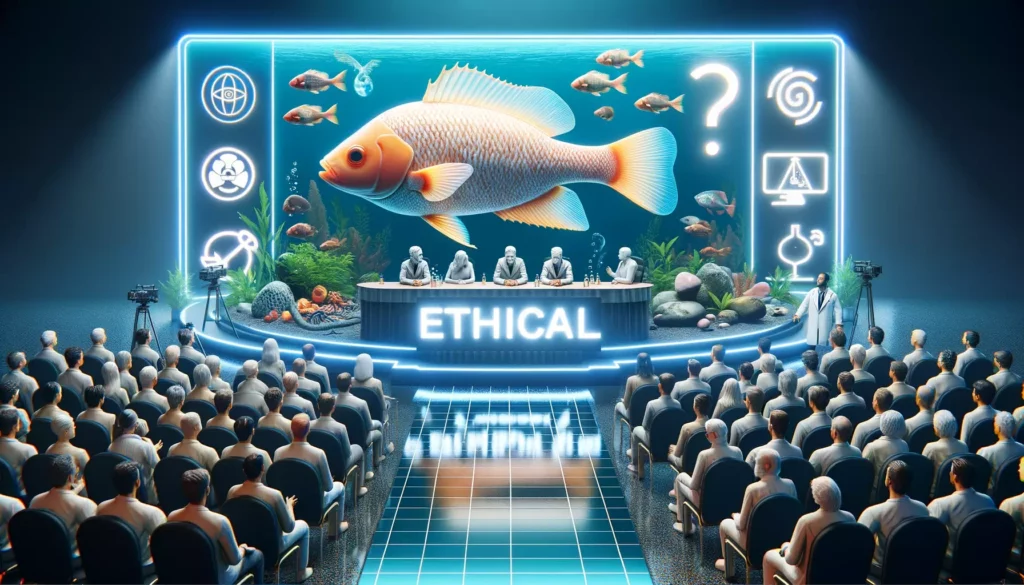
Since their introduction in 2003, GloFish have made a significant splash in the aquarium market. Initially, GloFish were available in a single color, a bright fluorescent green. However, as their popularity grew, so did the range of available colors. Today, GloFish come in various hues, including red, orange, blue, and purple, thanks to the incorporation of different fluorescent proteins.
The market for GloFish has expanded beyond just the fish themselves. It now includes a range of specialized products. These include GloFish-specific tanks, lighting that enhances their colors, and even decorative accessories designed to complement their vibrant hues. This expansion reflects the growing interest of hobbyists in these unique creatures.
Certainly, here’s a summary of the market evolution of GloFish since their introduction in 2003:
- Introduction and Single Color: GloFish were introduced in 2003, initially available in a single bright fluorescent green color.
- Expansion of Color Range: As their popularity increased, the range of available colors expanded. Today, GloFish are available in various hues, including red, orange, blue, and purple, achieved through the incorporation of different fluorescent proteins.
- Diversification of Products: The market for GloFish has grown beyond just the fish themselves. It now includes specialized products such as GloFish-specific tanks, lighting designed to enhance their colors, and decorative accessories that complement their vibrant hues.
- Broader Interest in Genetic Modification: GloFish’s popularity has sparked interest in the broader field of genetic modification in pets. This interest has triggered discussions about the future possibilities and ethical considerations of genetically modified organisms (GMOs) in the pet industry.
- Firm Establishment in the Aquarium Market: Despite controversies, GloFish have firmly established themselves in the aquarium market. They appeal to both beginners and experienced fish keepers, reflecting the growing interest of hobbyists in these unique and vibrant creatures.
As GloFish have become more popular, they’ve also sparked interest in the broader field of genetic modification in pets. This interest has led to discussions about the future possibilities and ethical considerations of genetically modified organisms (GMOs) in the pet industry. Despite controversies, GloFish have firmly established themselves in the aquarium market, appealing to both beginners and experienced fish keepers.
Health Concerns with Home Aquarium GloFish
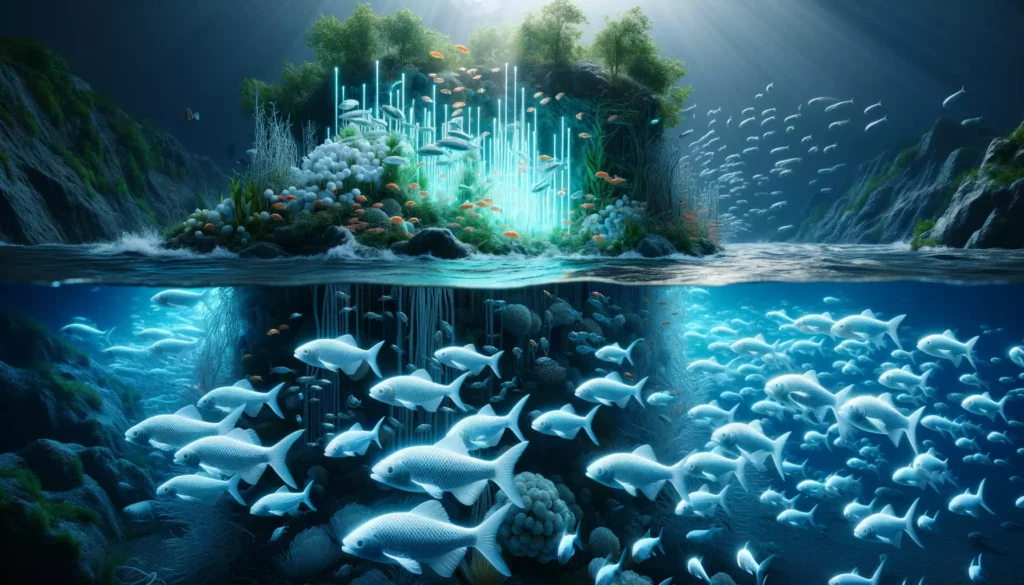
When it comes to GloFish in home aquariums, health concerns are relatively minimal. GloFish are as healthy and hardy as their non-genetically modified counterparts. The genetic modifications made to GloFish are solely for coloration and do not impact their overall health or lifespan.
There is no evidence to suggest that GloFish pose any additional health risks to humans compared to regular aquarium fish. Like all aquarium pets, proper tank maintenance and hygiene are crucial to prevent any potential issues. This includes regular water changes, tank cleaning, and monitoring for signs of fish stress or illness.
However, it’s important for owners to be aware of the general risks associated with aquariums. This includes potential allergies to fish food and exposure to bacteria like Mycobacterium marinum. Such risks are common to all home aquariums, not just those with GloFish.
In summary, GloFish are a safe and healthy choice for a home aquarium. Their care requirements are straightforward, mirroring those of traditional aquarium fish. As long as owners maintain good aquarium practices, there should be no additional health concerns with GloFish.
